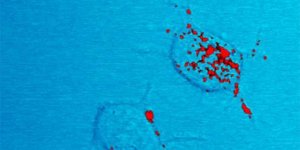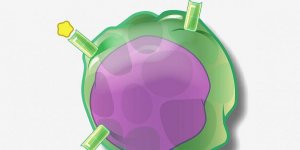| Health / Health News |
Açaí fruit can transmit Chagas disease
Artisan juice made with açaí, the fruit of a palm that grows in the rainforests of northern Brazil, could be a major source of infection with Trypanosoma cruzi, the parasite that causes Chagas disease.

Euterpe oleracea with fruits (açaí). ![]()
The disease is transmitted by triatomine bugs ‒ blood-sucking insects known by several different names in Latin America (chinche, chirimacha and barbero, among others).
Symptoms of the disease can appear in the first months after the infection, but most people do not show signs of the disease, which makes early diagnosis difficult. When the disease evolves to the chronic phase it can cause cardiac and digestive complications.
The new studies suggest that people can become infected by consuming açaí when the insect vector, or its faeces, are accidentally mixed with the fruit while blending the juice.
The fruit comes into contact with the vector during processing and storage: while kept in open baskets, the açaí fruit ferments and generates carbon dioxide, which attracts the triatomine insect.
One of the papers studied ten individuals in the cities of Manaus and Labrea, in the Brazilian state of Amazonas, who had symptoms of fever, headaches and general weakness.
The researchers found that these patients were infected with the same varieties of parasite found in artisan açaí juice they had consumed days earlier.
Another study confirms that the growth of Chagas disease in Pará, one of the country’s highest açaí juice-consuming states, is associated with the harvest season of the fruit between August and December.
In Belém, the capital of Pará, it is estimated that 200,000 liters of açaí are consumed per day during harvest season ‒ double the quantity consumed in other seasons. This makes it the second most consumed food in the city during that season.
Chagas disease is one of the major health problems facing countries and states in the Amazon region, causing disability in infected people and more than 10,000 deaths per year.
Açaí juice contamination can be avoided by appropriate handling of the fruit, including dipping the fruit in boiling water for ten seconds and then spraying them with cold water.
The risks of disease transmission through açaí consumption outside of the northern region are low, because juice exported to other regions or countries undergo mandatory pasteurization. (SciDev.Net)
YOU MAY ALSO LIKE



